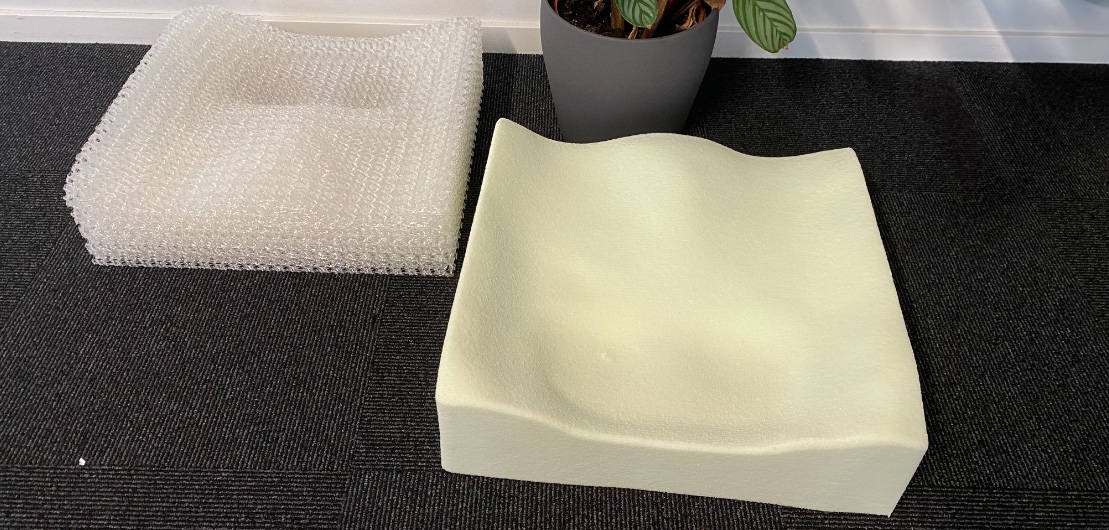Using pressure mapping to compare custom seats in traditional foam with 3D-printed
We have several years of experience with 3D printing insoles, and our customers take advantage of our Programmable Foam ® technology for analyzing and improving pressure distribution under sensitive feet. We offer robust technology in our insole solutions. So, the next application to investigate and find a solution is the 3D printing of seats and cushions and how this can be confirmed by using pressure mapping.
Let’s explore the performance of 3D-printed seats compared to traditional foam seats and cushions.
Data capture
The first step in creating a seat for a user is data acquisition. Getting the right data can be a challenge. The right digital measurements are crucial for professionals who want to produce a customized seat based on data from the individual user, and it is the basis of obtaining a good digital model of the seat at the outset of the process.
The majority of 3D models come from a scan. This model is the base for 3D printing a good seat and is typically also used for making the cover.
The model here is our founder and CTO, Jeremie Gay, as shown in the picture. To get the right measurements, we teamed up with a professional designer of customized seats for positioning, who used a vacuum molding technique to make a scan and a CAD model based on that data. This digital form was used to create a traditional carved foam seat and a 3D-printed seat made of soft thermoplastic polyurethane (TPU).
Pressure mapping technique
Pressure mapping is a technique used to measure and analyze pressure distribution between an object and the surface it is in contact with. A sensor mat was positioned between the seats and Jeremie to measure the seats’ performance regarding pressure distribution and relief.
Even though Programmable Foam® can replace traditional foam, there are differences in the products. The traditional foam comprises tiny bubbles or cells distributed throughout the material, giving it a spongy and compressible texture.
For the Programmable Foam® material, a gyroid structure is used. The gyroid structure is a lattice structure known for its exceptional mechanical properties. It has been shown to have a unique ability to distribute pressure evenly, making it ideal for applications where pressure needs to be dispersed or absorbed effectively.
Changing the scheme
The most effective way to present the results and differences between the pressure mapping for seatings in traditional foam and 3D-printed Programmable Foam ® is by examining the output of a pressure map. The scale creates a visual representation ranging from red, indicating high-pressure areas, to darker blue, signifying the lowest pressure. A colorful spectrum facilitates easy decoding of how the pressure is distributed.
In the traditional foam seat(1), there is a reduction in pressure, but high pressure is still evident around the sit bone area, with a distinct light blue indicating pressure in the thigh area. Upon comparison with the 3D-printed seat(2), we observe that pressure is still registered where body contact exists. However, the color scheme has shifted, illustrating reduced and more evenly distributed pressure with the 3D-printed seat.
We took the 3D-printed seat a step further by applying post-processing adjustments, completely eliminating the hard pressure areas.
Effective pressure distribution for seating
To wrap up our journey of pressure mapping for seating through 3D-printed seats versus the traditional foam, let’s crack the colorful language of our pressure maps. The traditional foam seat reduces pressure, still has a higher pressure around the sit bone area, and paints a light blue picture in the thigh zone.
There are still pressure points where bodies come into contact, but the color shift is less intense and more spread out.
The traditional carved foam and the 3D-printed seat have been in the spotlight in this comparison. The gyroid structure in the 3D-printed foam, known for its exceptional mechanical properties, has proven effective in distributing pressure evenly.
So, what’s the big picture? As we continue to innovate and refine our approach, these findings serve as a stepping stone toward enhancing seating solutions. Applying 3D printing technology in seats and cushions promises to create more comfortable, hygienic, breathable, and sustainable sound custom-fitted products.



